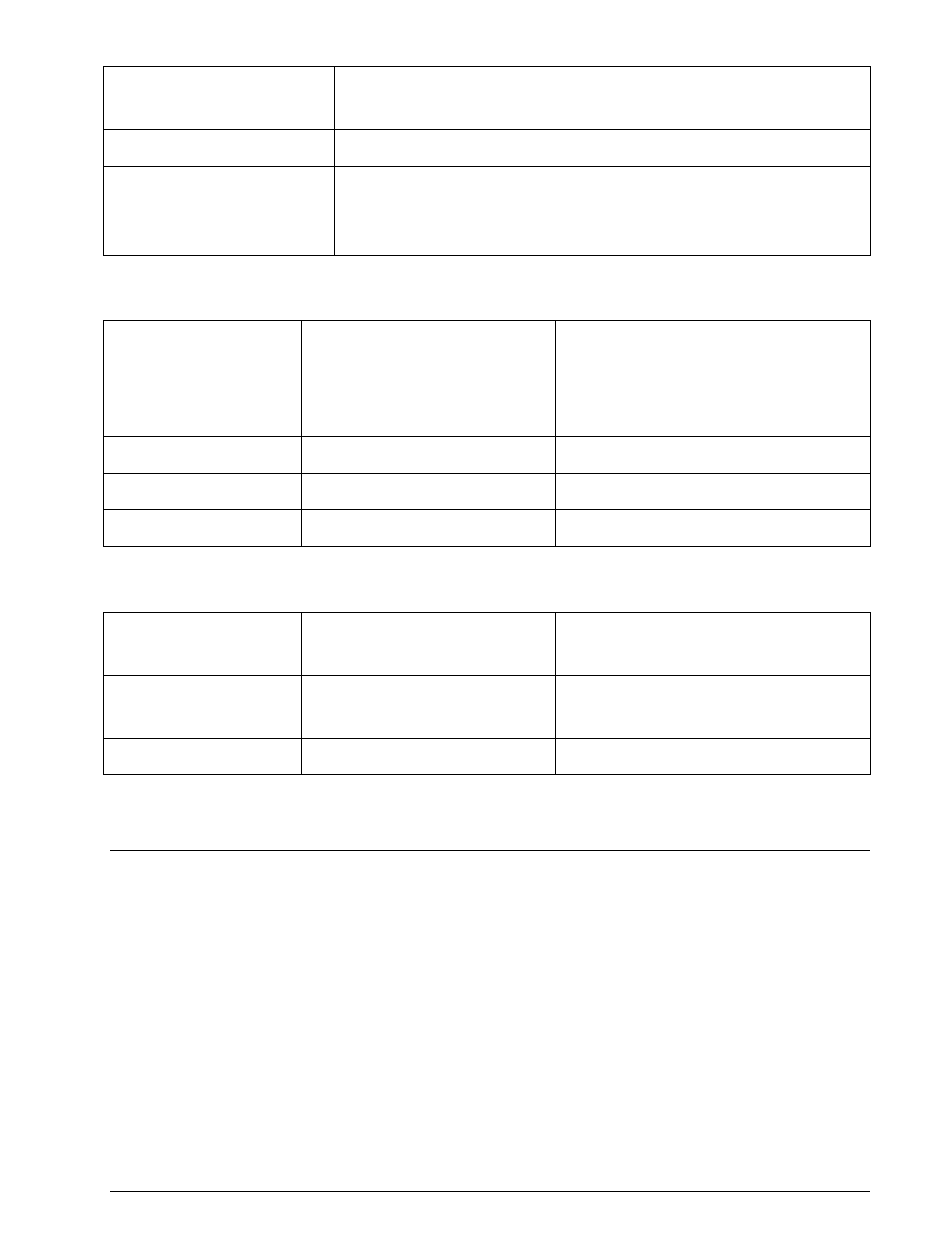Classifier code check hf/vhf/uhf (ccc), How the classifier code check works – Wavecom W-SPECTRA (Automatic Monitoring System) V1.1.0 User Manual
Page 216

206
Classifier
– the Brain of W-SPECTRA WAVECOM Monitoring System W-SPECTRA, W-SPEED Manual V1.1.0
CW-Morse
Ts = 1.6 s: 6 to 60 Bd
Ts = 3.2 s: 3 to 60 Bd
Voice
AM, FM, USB, LSB
Operation
FFT display of classified signals
Continuous and single-pass mode
Classifier Code Check with look-up table
Wideband classifier (W-Classifier-WB) technical data.
FSK
m = 0.8: 100 – 2400 Bd
m = 0.8: 50 Bd
m >= 2: 100 – 2400 Bd
m >= 2: 50 Bd
12 dB (Eb/N0)
15 dB (Eb/N0)
14 dB (Eb/N0)
16 dB (Eb/N0)
PSK 2/4 Variant A/B
100 – 2400 Bd
14 dB (Eb/N0)
PSK 8/16 Variant A/B
100 – 2400 Bd
16 dB (Eb/N0)
CW-Morse
8 – 50 Bd
18 dB (Eb/N0)
W-Classifier-WB quality of modulation classification.
FSK 100 Bd – 60 kBd
baudrate
center frequency
0.3%
2% of baudrate
PSK 100 Bd – 60 kBd
baudrate
center frequency
0.2%
0.15% of baudrate
CW-Morse 6 – 50 Bd
baudrate
5%
W-Classifier-WB accuracy of measured parameters.
Classifier Code Check HF/VHF/UHF (CCC)
The Classifier Code Check is a versatile analysis tool for the classification of unknown signals and the de-
termination of the protocol (mode) in use. The CCC combines a classifier with a table-based mode check
and an advanced code check.
There are two kinds of CCCs in W-SPECTRA. The HF CCC will attempt to process all signals within a band-
width of up to 4.8 kHz depending on settings and will primarily address the requirements for the analysis
of signals below 30 MHz. The VHF/UHF CCC will attempt to process all signals within a bandwidth of up to
96 kHz depending on settings and will primarily address the requirements for the analysis of signals from
30 MHz to 3 GHz. Both CCC will of course work with signals in other frequency ranges if they fall within
the bandwidth, and fulfil the other criteria, used by the CCC processes.
How the Classifier Code Check Works
The CCC processes input signals in up to four successive steps as shown in the block diagram below,
which also shows the possible signal paths. The user can select how many steps should be involved in the
analysis of the signal(s) under investigation.
